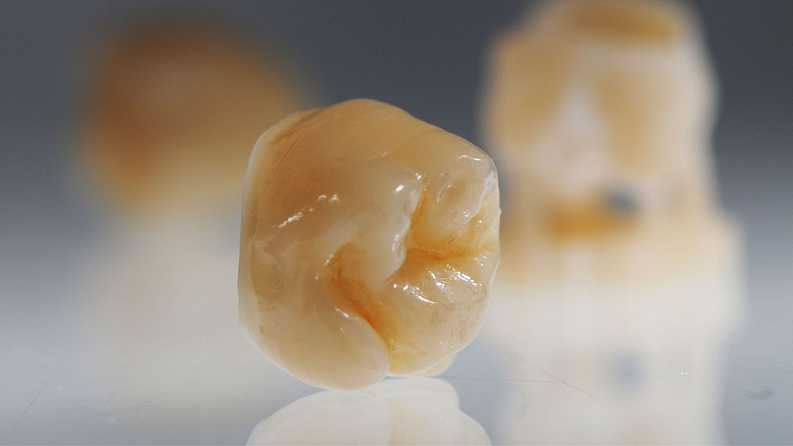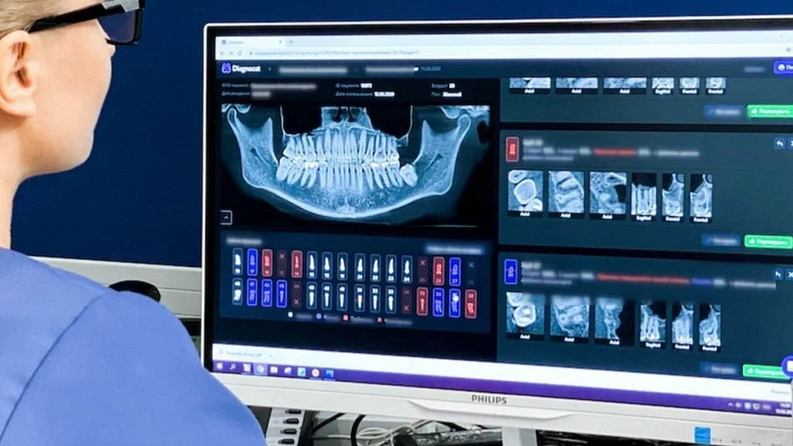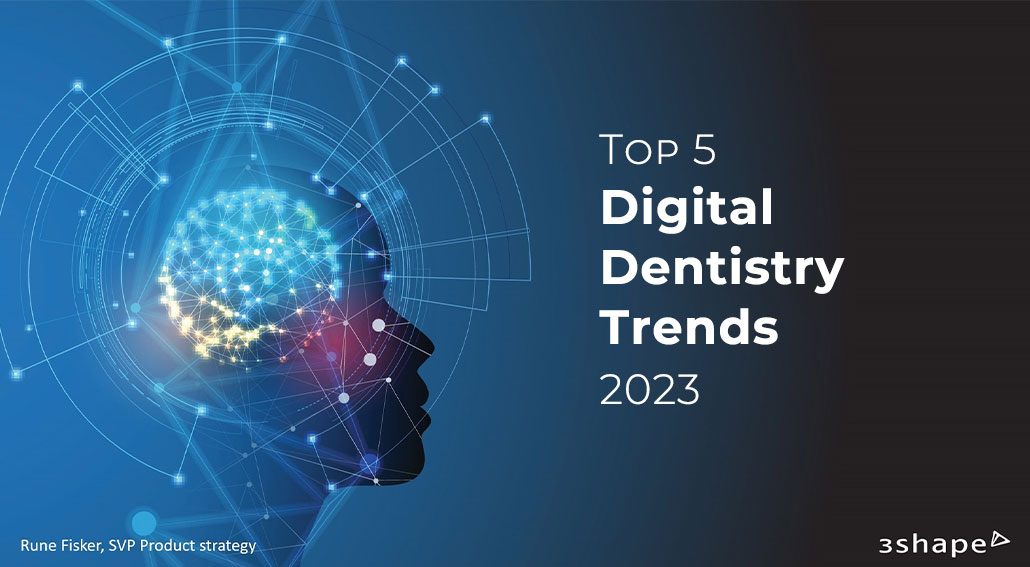As we enter another year, it looks like it's going to be yet another exciting one in the world of digital dentistry. The last year has seen numerous changes in the intraoral scanner market and 3D printing.
Some scanners went wireless, their prices continue to fall - making it more accessible to dentists around the world, and the introduction of capable artificial intelligence could have a big impact on the dental industry.
Last year, Rune Fisker, the Senior Vice President of Product Strategy, Business Unit Director, Dental Lab and Dental Clinic at 3Shape, accurately predicted that 3D printing would be the next big thing in the dental industry.
If you are curious his 2022 predictions are here. This year, Rune has written another post on what he thinks will be the biggest digital dentistry trends of 2023, and it's got some pretty interesting stuff.
He is happy for us to share it here. I've written some of my own thoughts in each category, let me know what you think!
Intraoral scanners driving digital dentistry
The adoption of intraoral scanners by dentists and labs, grew at an extremely fast pace last year. It will continue its climb in 2023. IOS penetration in the USA is now over 50% according to the ADA with mature global markets showing similar penetration. In fact, with 3Shape’s TRIOS intraoral scanner, last year we saw the number of TRIOS cases grow by 66%. Every two seconds around the world a case is scanned with a TRIOS. In particular, we see a major pickup in IOS usage for full and partial denture workflows. Future IOS usage will continue to go far beyond digital impressions just replacing analog impressions. IOSs are transforming the way we work.
iDD thinks:
I agree with Rune on this one. He shared a statistic from the American Dental Association survey which is likely a bit high and biased to digital users, but there is no doubt in my mind that adoption rates of IOS devices have sky rocketed in recent years.
America currently leads with IOS adoption. In most developed countries this figure is likely closer to 20-30%. The other exciting aspect is in developing countries, where adoption of IOS is as low as 5%, we will likely see a huge increase in IOS adoption over the next 5 years. There is so much room for growth in this market. Intraoral scanners will replace impression material completely in due time.
If you're looking to learn the fundamentals of intraoral scanning, we've got a great free online course that will really help you out.
3D printing material revolution
Along with intraoral scanners, 3D printers are the hottest equipment in the digital category. The true game changer though, is 3D printing material. Every month, we see new and improved dental materials released. In 2023, 100% 3D printed final dentures will become commonplace and most likely, disrupt the removable market.
Also, 3D printed final crowns are beginning to pop up in early-adopter dental practices. Eventually, all indications will have the potential to be 3D printed – a core question is how many clinics will buy 3D printers and what will they choose to print?
iDD thinks:
Another thing I agree with Rune about. The possibilities with 3D printing in dentistry are endless and there are so many applications. 3D printing is completely blowing up with so many new printers and resins every few months.
3D printing is the logical next step after buying an intraoral scanner. It enables you to move some production in-house and reap the rewards of making prosthetics within the clinic. It is also much cheaper than buying a milling machine so the barrier of entry is much less. I expect more and more clinics to purchase printers in the coming years once these users get accustomed to using their scanners and look for the next step in progression.
We've collected all of our 3D printing courses into this helpful Bundle, which you can get lifetime access to so you can refer back whenever you want.

3D Printing is going to be the big deal in dentistry after intraoral scanners.
Example above is a Bego VarseoSmile 3D Printed Crown
AI everywhere
In 2023, artificial intelligence will become a reality for most clinics and labs. AI innovation skyrocketed in 2022 and the trend is not slowing down. Right now, everything from intraoral scanners to CAD design software makes use of AI applications. New and exciting applications of AI in X-ray analysis and diagnostics are being developed across the healthcare industry. AI will continue to change the way we practice dentistry, and the way we live.
iDD thinks:
AI is going to completely change the world. We are seeing this before our eyes with the likes of ChatGPT etc. AI is already having an impact on dentistry as Rune mentioned and I expect this to only increase over time. Some things in dentistry AI does very well, e.g. CAD single unit crowns. Other things however like digital dentures, AI is not quite there yet. There is certainly room for improvement. Then there is all the AI diagnostics etc. that is going on in dentistry. How we practice and diagnose is likely going to change significantly within the next 2-3 years.

AI is already here. Above is an example of Diagnocat software we use at iDD.
Diagnocat is essentially an AI personal assistant in diagnostics and treatment planning.
A hyper-connected world.
The digital wave is driving dentistry to become an ecosystem of interconnected software, devices, and sensors. Standalone systems may find themselves standing very alone by year’s end. This paradigm is set to become the driver of the digital clinic. In 2023, a growing number of devices and software in the clinic will be interconnected with the Practice Management Software (PMS) serving as the host.
iDD thinks:
For the longest time we have seen digital tools work in their own 'islands' completely in isolation from each other. What we mean is there is little or no integration of different tools together or with practice management software. This is proving to be annoying especially as more and more people adopt scanners, printers, face scanners, various software etc. Having a centralized place for patient data from all different tools is the future. We are still not there yet but it is getting better as more and more integrations between companies are being put into place.
Meet your digital twin
Digital twins – the virtual simulation of real-world objects or persons - will be another major tech trend in 2023. In dentistry, building a digital twin of a patient can mean combining the inputs from many different devices, sensors, and software. This combined data will allow us to diagnose, plan and treat patients at a completely new level – particularly when adding in AI. I believe that we will use the digital twin for every treatment with the PMS serving as the link to all devices and software.
iDD thinks:
As above, this point relates to centralizing patient data, or in other words having a 'virtual patient'. By combining all the patient information, data, xrays, scans etc into one place this will be the ideal way to diagnose, plan and treat patients in the future. Something to aspire to for sure and likely will be the norm in the future. The trick is being able to quickly and efficiently move all this data around. The only solution really is on the cloud. One notable example of a 'digital twin' is the RayFace software by Ray. Using a facial scanner and incorporating CBCT and intraoral scans, the software enables you to align all this data together. Clever stuff.
Your digital twin. This example is from RayFace software.
Many companies are working to be able to align all patient data in a centralized place.
Some excellent points from Rune from 3Shape and I hope you enjoyed our commentary.
What are your thoughts? Leave a comment below!
Want to master digital dentistry?
Click Here to Get access to 70+ online courses as part of our Membership!

